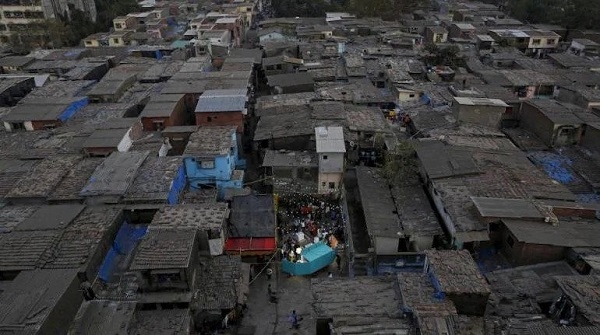WHO Chief lauds efforts to contain COVID-19 in Mumbai's Dharavi slums
Total Views |
Geneva, July 10: Citing the example of Asia's largest slum Dharavi, World Health Organisation (WHO) Director-General Tedros Adhanom Ghebreyesus praised the Dharavi model saying the model has shown that even if the outbreak is very intense, it can still be brought back under control.

"Today the world recorded 12 million cases. In the last six weeks, cases have more than doubled. However there are many examples from around the world that have shown that even if the outbreak is very intense, it can still be brought back under control," Ghebreyesus said in a statement on Friday.
"In 🇻🇳🇰🇭🇹🇭🇳🇿🇮🇹🇪🇸 & 🇰🇷 & even in Dharavi, a densely packed area in Mumbai, a strong focus on community engagement & the basics of testing, tracing, isolating & treating all those that are sick is key to breaking the chains of transmission & suppressing the virus"-@DrTedros
— World Health Organization (WHO) (@WHO) July 10, 2020
"And some of these examples are Italy, Spain, and South Korea, and even in Dharavi -- a densely packed area in the megacity of Mumbai -- a strong focus on community engagement and the basics of testing, tracing, isolating and treating all those that are sick is key to breaking the chains of transmission and suppressing the virus," he added. He said that testing and tracking is the only key to break the chain of transmission of the highly contagious disease.
DHARAVI 4'Ts MODEL
Dharavi spread over 613 hectares and comprising of single or multi-story houses located in narrow lanes. The extraordinary population density of 2,27,136 persons per square km. It has a population of around 6.5 lakh. They also have to share community toilets as rarely a house in the area has a separate toilet.
Dharavi recorded its first case on April 1. By April, Dharavi had 491 cases with a growth rate of 12% and a case doubling period of 18 days. The case doubling time improved to 43 days in May and 78 days in June. After that Dharavi was named as ticking COVID bomb. And in just a few days Asia’s largest slum became one of the major COVID-19 hotspots in Mumbai.
After Dharavi was witnessing a steep increase in a new infraction, the government decided to adopt rapid action model 4'Ts - Tracing, Tracking, Testing and Treating, proactive screening to contain the virus in the slum.
BMC has pressed into service 50 mobile fever clinics in ambulances in these areas. he mobile clinics drive around through the day with a team of doctors, who carry out door-to-door screening of residents, check for fever and other symptoms, co-morbidities, and collect swabs, if there is any suspected person. 47,500 people were covered by doctors and private clinics in house-to-house screening, about 14,970 people were screened with the help of mobile vans, and 4,76,775 were surveyed by BMC health workers.
Fever clinics were set up for screening high-risk categories such as elderly/senior citizens. This helped to screen 3.6 lakh people. Also, around 8246 senior citizens were surveyed and as part of its policy of 'timely separation', they were separated from the other community to effectively limit the transmission of the disease The suspected cases were immediately shifted to well-organized COVID Care Centres or Quarantine Centres, set up in all possible schools, marriage halls, sports complexes, etc, served by community kitchens with 24x7 medical services at hand.
The steps for elaborate screening include door to door survey of at least 10,000 houses per ward. It helped in both prompt separation of suspected cases from the community and lowering the mortality rate. Over 25,000 grocery kits have been distributed to families living in Dharavi. Also, over 17 lakh food packets have been distributed.
Dharavi has recorded 2,359 total cases with 12 new cases coming to light on Friday. The area currently has 166 active cases and 1,952 patients have been discharged from hospitals following recovery so far.

